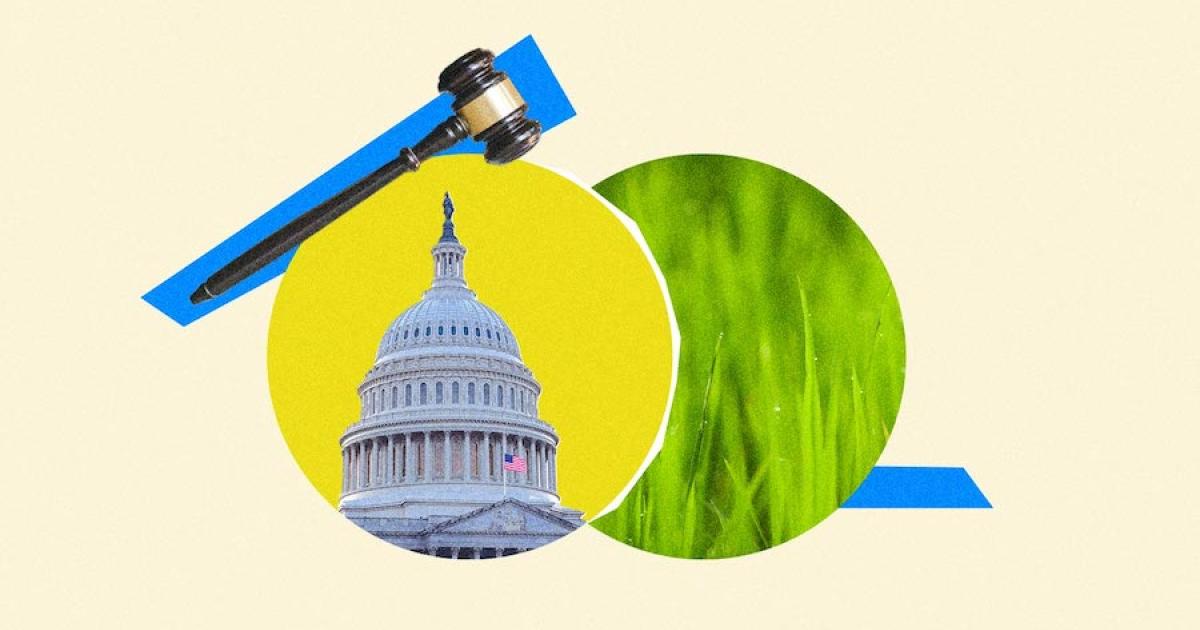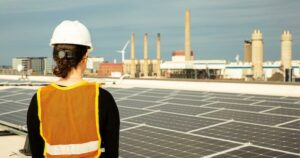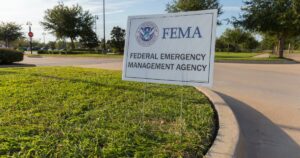
Since the passage of the Bipartisan Infrastructure Law (BIL) in 2021 and the Inflation Reduction Act (IRA) 14 months ago, the Department of Energy’s (DOE) Office of the Under Secretary for Infrastructure department has passed out $67 billion in clean energy funding. A plethora of grant opportunities for corporations, startups and nonprofits are available within multiple departments of the DOE — from grid reliability upgrades to renewable energy technology manufacturing facilities. To secure some of the $97 billion funding available, applicants must brave a bureaucratic system.
The first step to apply? Before filling out any details about the specific grants you’re targeting, you must complete a new section of the grant application called the Community Benefits Plans (CBP). This supporting documentation is mandatory for requesting funding from BIL or IRA programs.
Let’s take a look at the specifics of the CBP, as well as helpful tips to consider when embarking on a federal grant application tied to BIL or the IRA funding.
Stay up-to-date with the DOE
First, sign up for any and all newsletters within the DOE that you think may be applicable. Each office within its Office of the Under Secretary for Infrastructure has a host of specific newsletters that address its specific subject matter and concerns. These include the offices of Grid Deployment, Cybersecurity, Energy Security and Emergency Response, Clean Energy Demonstrations, Loan Programs Office, Manufacturing and Energy Supply Chains, and State and Community Energy Program. The newsletters announce grant application opportunities and relevant timelines; sign up here.
The newsletters also announce time periods during which you can provide feedback that ultimately shapes a grant’s program design before it goes live. The DOE dubs this the “Request for Information (RFI)” stage of the grant process, so watch for that window of time to exercise your voice.
Community Benefits Plans: The what and why
The DOE says it created the newly required CBP supporting document for every BIL or IRA program funding application to ensure “broadly shared prosperity in the clean energy transition.” The CBP holds a lot of weight within the application process — about 20 percent of a project’s overall score, which plays a large role in determining a funding award. The score centers around how your application will implement the following four sections required for the funding:
Justice40 Initiative
In January 2021, the Biden administration introduced the Justice40 Initiative, within an executive order, to confront and address the country’s underinvestment in disadvantaged communities. To that end, within the CBP’s Justice40 section you must clearly demonstrate how funds will flow to specific disadvantaged communities; create a timeline of when and how anticipated benefits will flow to them; address how to clearly track the benefits once they’ve been received; and address anticipated negative environmental impacts for the communities in question.
Diversity, Equity, Inclusion and Accessibility (DEIA)
The CBP’s DEIA section requires that you clearly explain how the project will incorporate diversity, equity, inclusion and accessibility objectives. This part of the application should lay out how your project may partner with businesses that either serve or are run by underrepresented populations, as well as educational institutions and training organizations that serve people who face barriers to jobs.
Good jobs
For the “Good Jobs” section, demonstrate how you intend to attract, train and retain the skilled labor necessary to complete the project. Additionally, you must clarify commitments to worker unionization, pathways to advancement and above average wages and benefits.
Workforce and community agreements
Lastly, workforce and community agreements require applicants to describe local stakeholder engagement plans, ensuring that all local workers involved in the project are accounted for and protected. Local stakeholders include labor unions, tribal governments and community-based organizations.
If the DOE ultimately selects your application, it will post a summary of the CBP online publicly for transparency and accountability. A DOE-hosted webinar providing more detailed information can be found here. I’ll dive into the specific grant opportunities in upcoming coverage.
- SEO Powered Content & PR Distribution. Get Amplified Today.
- PlatoData.Network Vertical Generative Ai. Empower Yourself. Access Here.
- PlatoAiStream. Web3 Intelligence. Knowledge Amplified. Access Here.
- PlatoESG. Carbon, CleanTech, Energy, Environment, Solar, Waste Management. Access Here.
- PlatoHealth. Biotech and Clinical Trials Intelligence. Access Here.
- Source: https://www.greenbiz.com/article/doe-has-97-billion-available-funds-heres-how-compete
- :has
- :is
- $UP
- 14
- 20
- 2021
- a
- About
- above
- accessibility
- accountability
- accounted
- Act
- Additionally
- address
- administration
- advancement
- ago
- agreements
- All
- also
- an
- and
- Announce
- Anticipated
- any
- applicable
- applicants
- Application
- Apply
- ARE
- around
- AS
- At
- attract
- available
- average
- award
- barriers
- BE
- been
- before
- benefits
- biden
- Biden Administration
- Billion
- bipartisan
- brave
- broadly
- bureaucratic
- businesses
- by
- called
- CAN
- CBP
- Centers
- chains
- clean energy
- clearly
- commitments
- Communities
- community
- Community-based
- compete
- complete
- Concerns
- Consider
- Corporations
- country’s
- coverage
- create
- created
- Cybersecurity
- demonstrate
- Department
- departments
- deployment
- describe
- Design
- detailed
- details
- determining
- dive
- Diversity
- document
- documentation
- DOE
- during
- each
- educational
- either
- emergency
- end
- energy
- engagement
- ensure
- ensuring
- environmental
- equity
- Ether (ETH)
- Every
- Exercise
- Explain
- Face
- facilities
- Federal
- feedback
- filling
- First
- flow
- following
- For
- found
- four
- from
- funding
- funds
- Goes
- good
- Governments
- grant
- grants
- Grid
- helpful
- holds
- host
- How
- How To
- HTTPS
- I’LL
- Impacts
- implement
- in
- include
- inclusion
- incorporate
- inflation
- information
- Infrastructure
- institutions
- intend
- into
- introduced
- involved
- IRA
- IT
- ITS
- January
- January 2021
- Jobs
- jpg
- labor
- large
- Law
- lay
- live
- loan
- local
- Look
- Lot
- mandatory
- manufacturing
- Matter
- May..
- months
- more
- multiple
- must
- necessary
- negative
- New
- newly
- Newsletters
- nonprofits
- objectives
- of
- Office
- offices
- on
- once
- online
- opportunities
- or
- organizations
- out
- overall
- part
- partner
- passage
- passed
- pathways
- People
- percent
- periods
- plans
- plato
- Plato Data Intelligence
- PlatoData
- plays
- plethora
- populations
- Post
- process
- Program
- Programs
- project
- projects
- prosperity
- protected
- provide
- providing
- publicly
- question
- received
- reduction
- relevant
- reliability
- Renewable
- renewable energy
- request
- require
- required
- requires
- response
- retain
- Role
- Run
- says
- score
- secretary
- Section
- sections
- secure
- security
- serve
- shapes
- shared
- should
- sign
- skilled
- So
- some
- specific
- specifics
- Stage
- stakeholder
- stakeholders
- Startups
- State
- Step
- subject
- SUMMARY
- supply
- Supply chains
- Supporting
- system
- Take
- targeting
- Technology
- that
- The
- Them
- These
- think
- this
- Tied
- time
- timeline
- timelines
- tips
- to
- track
- Train
- Training
- transition
- Transparency
- transportation
- Tribal
- Ultimately
- under
- underrepresented
- Unions
- up-to-date
- upcoming
- upgrades
- Voice
- wages
- Watch
- webinar
- weight
- WELL
- What
- when
- which
- WHO
- will
- window
- with
- within
- worker
- workers
- Workforce
- you
- Your
- youtube
- zephyrnet











